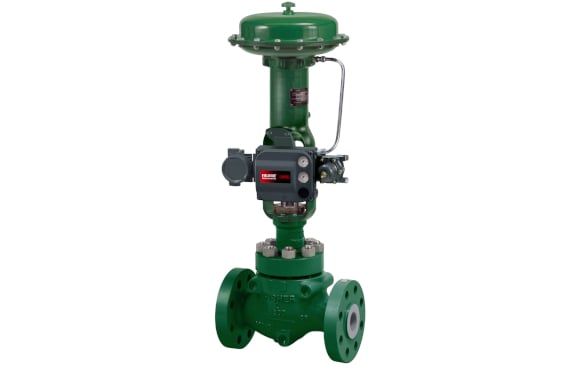Optimize Building Workflow With Costs Automation Controls for Controllers
In the realm of modern-day building procedures, the combination of costs automation controls for controllers has come to be an essential facet in making certain optimal performance and efficiency. By harnessing the power of costs automation controls, structures can achieve unmatched levels of energy performance, system reliability, and cost-effectiveness.
Enhancing Building Performance Through Automation Controls
Improving structure performance is extremely important in today's architecture and style industry, with automation controls playing a pivotal duty in achieving optimum efficiency. By incorporating sophisticated automation regulates into building designers, architects and systems can produce clever, energy-efficient structures that respond dynamically to changing environmental problems. These controls enable the seamless monitoring and management of various structure features, such as lighting, heating and cooling systems, and protection protocols, causing boosted operational effectiveness and cost financial savings.
Automation controls enable real-time information evaluation and adjustments, guaranteeing that buildings operate at peak effectiveness degrees while decreasing power waste. Through the use of sensing units, actuators, and systematized control systems, structures can adapt their settings based upon tenancy patterns, external weather, and time of day. This level of automation not only boosts the comfort and productivity of building occupants but likewise adds to sustainability efforts by decreasing total energy intake and carbon discharges.
Maximizing Energy Savings With Premium Controls
With the integration of costs automation controls right into constructing engineers, systems and designers can better enhance energy performance, improving the total functional performance of structures. Costs controls deal innovative features such as tenancy sensors, scheduling abilities, and adaptive formulas that allow precise tracking and modification of energy use. By leveraging these capabilities, buildings can dynamically react to changing occupancy patterns and environmental problems, guaranteeing that power is just consumed when required. Furthermore, premium controls facilitate the sychronisation of different structure systems, such as HVAC, lighting, and shading, to operate in harmony towards decreasing power waste. Via real-time information analytics and anticipating modeling, these controls can recognize inadequacies and possibilities for renovation, allowing for continual improvement of energy-saving techniques. Generally, the execution of costs automation manages not just minimizes energy expenses yet additionally adds to a more eco pleasant and lasting built atmosphere.

Improving System Efficiency and Dependability
The assimilation of costs automation manages into building systems boosts functional efficiency, making certain optimum efficiency and dependability. By using innovative controls, building drivers can keep an eye on and adjust various systems in real-time, bring about boosted efficiency throughout cooling and heating, lighting, safety, and other essential structure functions. These controls use anticipating maintenance abilities, enabling aggressive recognition of possible concerns prior to they escalate right into pricey troubles. Additionally, premium automation controls give information analytics that supply insights into system efficiency fads, allowing for continuous optimization and fine-tuning of procedures. Making use of top quality controls also boosts system dependability by lowering the danger of tools failures and downtime. With attributes like remote monitoring and diagnostics, building managers can deal with issues promptly, decreasing disruptions to developing operations. In general, the incorporation of costs automation regulates boosts system efficiency and integrity, inevitably adding to a much more lasting and reliable building environment.
Lowering Operational Expenses With Automation Technology
The implementation of automation technology in structure systems not just improves performance and dependability however additionally plays a critical function in driving more down functional expenses. control valves. By leveraging sophisticated automation controls, developing operators can optimize Learn More Here power consumption, minimize waste, and simplify upkeep processes. Automation modern technology enables specific monitoring and control of different structure systems such as Security, lights, and hvac, leading to a lot more reliable procedures. Via the combination of sensing units and data analytics, automation systems can identify inadequacies and instantly readjust settings to guarantee ideal efficiency while minimizing energy usage. Additionally, automation innovation aids in predictive upkeep by finding potential problems early, stopping costly fixings and downtime. By centralizing control and automating routine tasks, operational prices can be substantially lowered, liberating sources for other important structure upgrades or investments. On the whole, the strategic application of automation technology not just improves operational performance however likewise adds to lasting price financial savings for structure owners and supervisors.
Enhancing Control and Flexibility for Operations

Additionally, these systems make it possible for smooth integration with various other structure monitoring technologies, such as power tracking systems and safety and security protocols, producing an extensive ecosystem that improves procedures and enhances general effectiveness (control valves). The capacity to from another location access and adjust settings more enhances control and adaptability, allowing for speedy responses to altering functional demands. Inevitably, purchasing costs automation controls not only enhances the everyday procedures of a structure yet likewise results in lasting price financial savings and sustainability benefits
Final Thought
In final thought, costs automation controls for controllers play an important role in maximizing structure operations. These controls improve performance, make best use of energy cost savings, enhance system efficiency and dependability, lower investigate this site functional costs, and boost control and flexibility for procedures. Applying automation innovation in structures can lead to significant enhancements in total functional performance and sustainability. It is crucial for companies to purchase costs automation regulates to attain better structure efficiency and functional results.
By taking advantage of the power of costs automation controls, buildings can accomplish unparalleled levels of energy performance, system integrity, and cost-effectiveness. On the whole, the unification of premium automation regulates raises system efficiency and integrity, inevitably adding to a more sustainable and efficient structure environment.
Automation modern technology allows exact surveillance and control of numerous structure systems such as HEATING AND COOLING, safety, and lights, leading to much more reliable operations. These controls boost effectiveness, make the most of power financial savings, enhance system efficiency and dependability, minimize operational prices, and enhance control and adaptability for procedures. It is important for companies to spend in premium automation manages to achieve far better structure efficiency and functional outcomes.